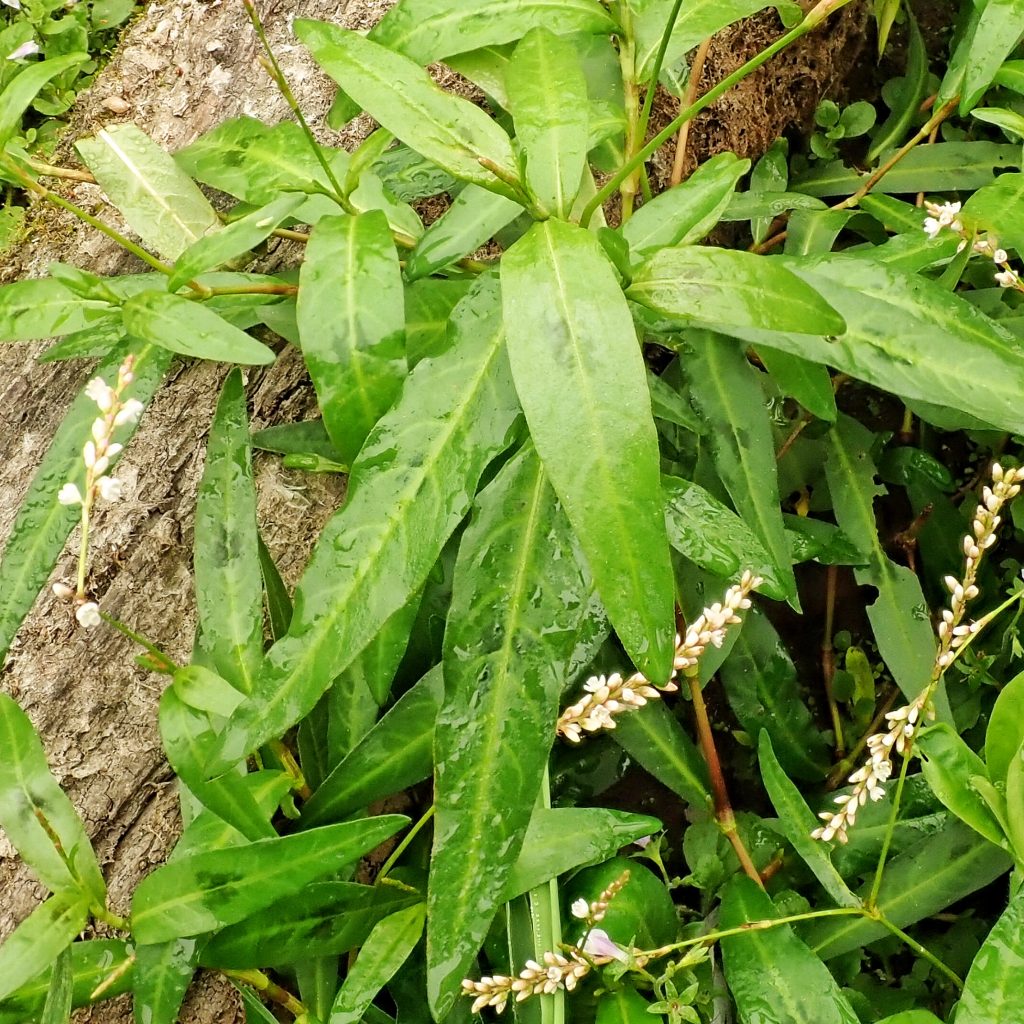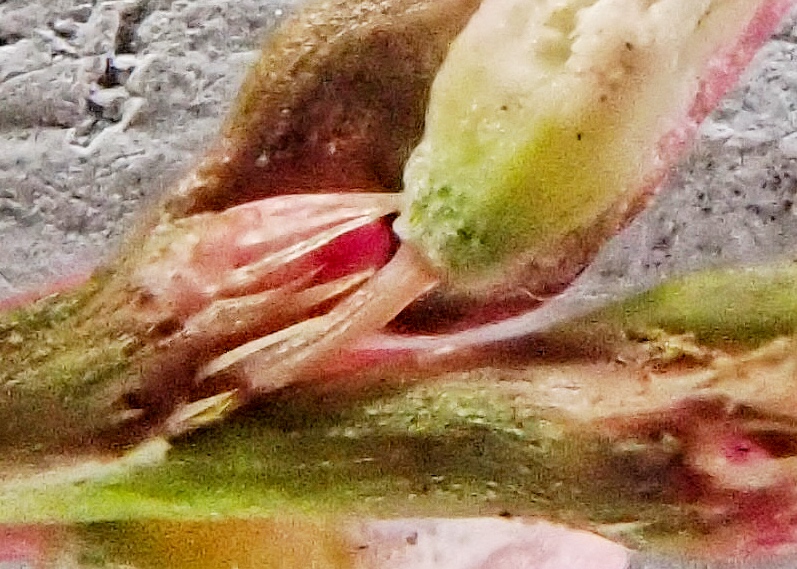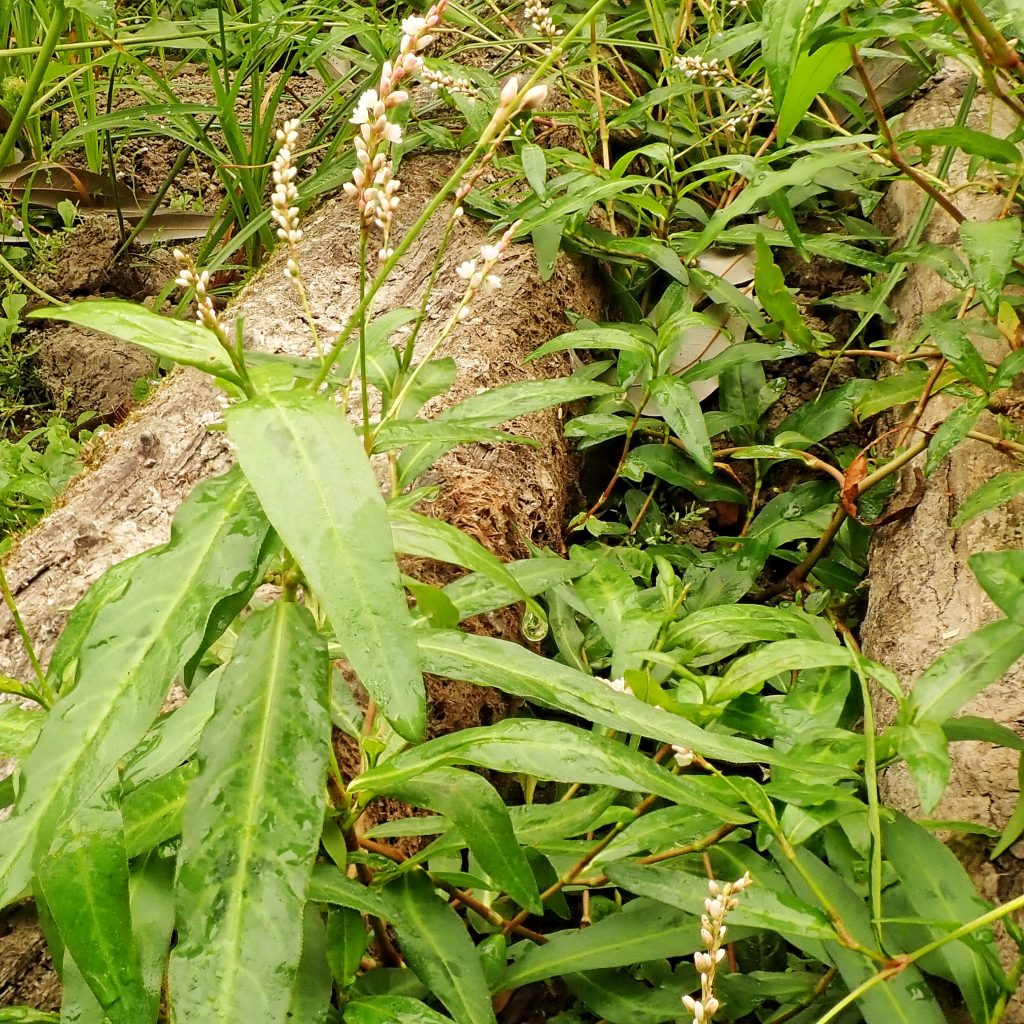
This introduced member of the family Polygonaceae (buckwheats) is a denizen of wetlands and vernally wet areas, and can be found throughout the PNW. It is an erect to sprawling plant which can be up to 2’ tall. It is an annual, without stolons or rhizomes, which separates it from the similar Persicaria amphibia. The stems are often swollen above the joints, with a papery sheath (ocreae) surrounding the leaf petiole, that has 1-2mm bristles at its summit (visible with a hand lens). This characteristic separates it from the very similar P. longiseta, whose ocreael bristles are up to 4mm long. The flowers, which bloom all through the summer, are in spikes at the end of the stems, and are small, not keeled, white to pink, with simple and faint veins, and a smooth, non-glandular peduncle (flower stalk). This combination distinguishes it from all other Persicaria spp. The leaves are lanceolate, untoothed, with a glandular surface and glandular hairs on their margins. They often have a dark mark near the base, which supposedly resembles the eponymous lady’s thumb.
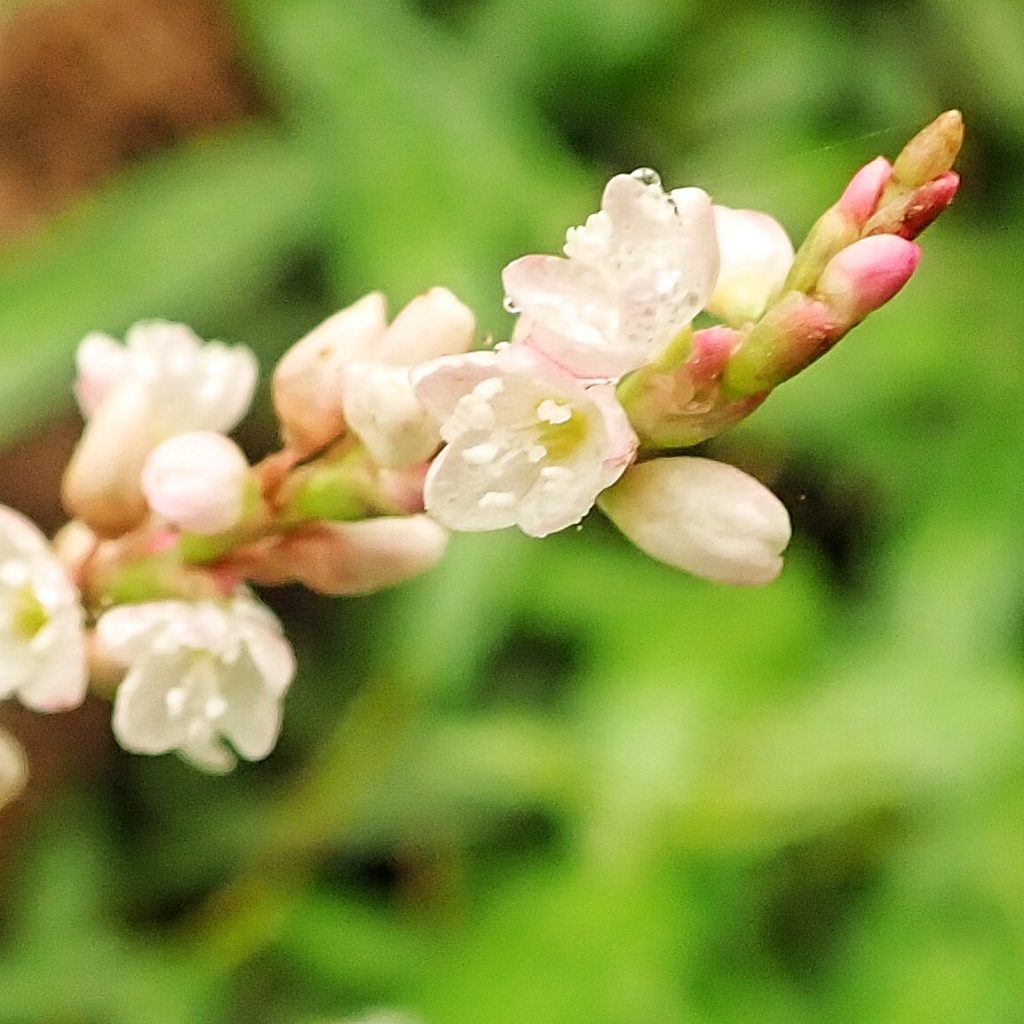
Lady’s Thumb is a larval host to the butterflyLycaena helloides (Purplish Copper), and the moths Pyrrharctia isabella (Isabella Tiger Moth), Orthonama obstipata (The Gem),and O. centrostrigaria (Bent-line Carpet), amongst others. The skeletonizing leaf beetle Galerucella nymphaeae (Waterlily Beetle) feeds on this plant as an adult, as well as utilizing it as a larval host. And it’s seeds are a food source for Sora, Virginia Rail, and seed eating waterfowl and songbirds.
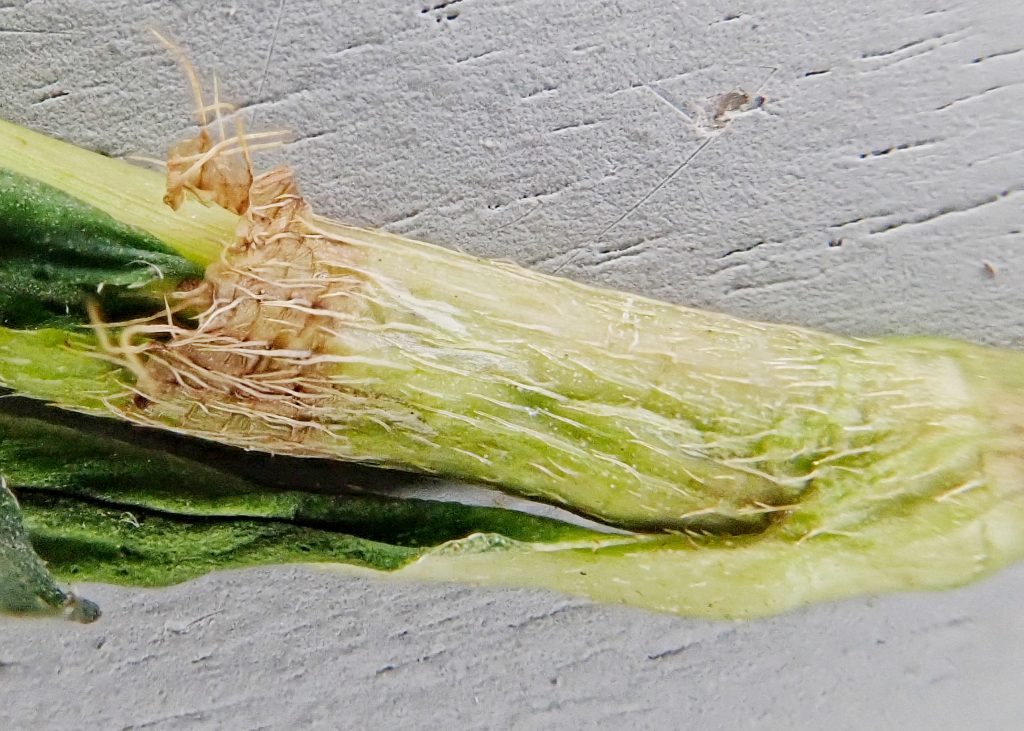
After spending most of its taxonomic life in the genus Polygonum, although there was a previous brief foray into Persicaria around the turn of the 20th century, Lady’s Thumb, along with the other ‘smartweeds’ (which ‘smart’ when their peppery sap contacts delicate skin), has moved back into the genus Persicaria, due to the lack of wings or a keel on the tepals of the flowers.
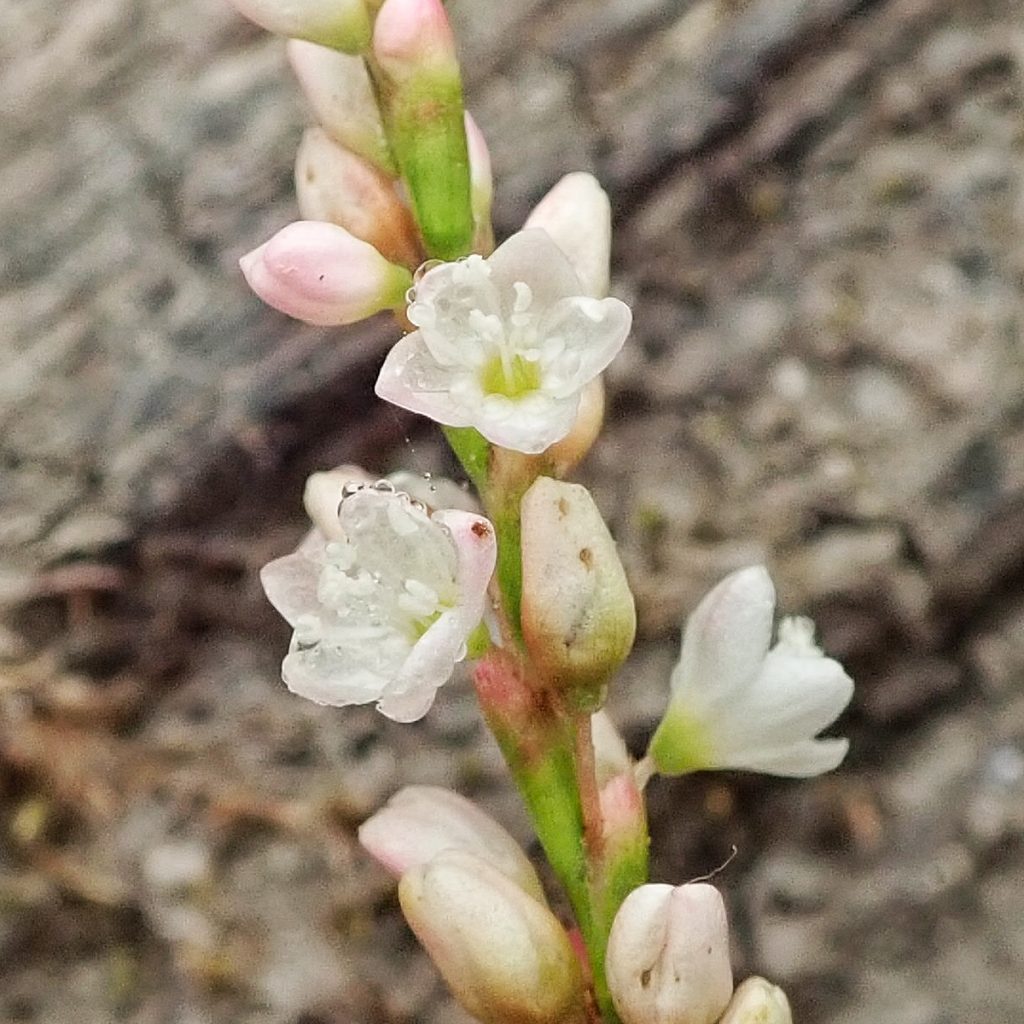
http://biology.burke.washington.edu/herbarium/imagecollection/taxon.php?Taxon=Persicaria%20maculosa
Polygonum persicaria | Lady’s-thumb Knotweed | Wildflowers of the Pacific Northwest
https://www.illinoiswildflowers.info/weeds/plants/lady_thumb.htm
Size- Up to 2’ tall
Habitat- Wetlands and vernally wet disturbed ground
Range- Region wide in appropriate habitat
Blooms- All summer
